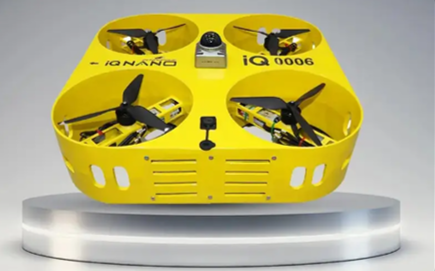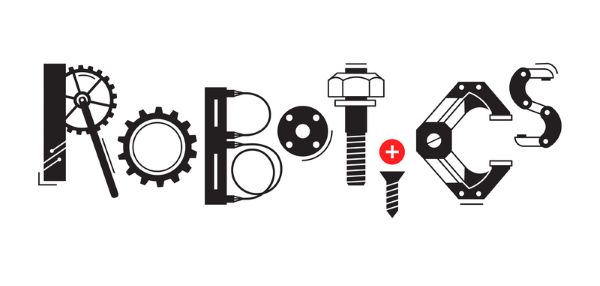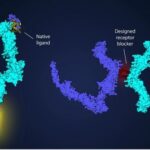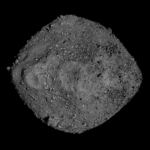Technological discussions about robots these days tend to go in three directions: humanoid robots that look remarkably similar to us, industrial robots that operate in isolation on assembly lines where no humans go, and cobots designed to work beside humans to coexist with us. There are, however, many other iterations of robots that don’t fit these three categories. In today’s posting, I give you three examples: a quadcopter that works in swarms, an autonomous self-propelled robot that can surf the ocean, and a semi-autonomous microbot for neurosurgery.
Swarm Robots Coming To A Warehouse Near You

ZenaTech is a Vancouver, British Columbia, technology company that has invented two artificially intelligent drones and is offering drone-as-a-service solutions to organizations. ZenaDrone, its subsidiary, has created the IQ Nano quadcopter drone (seen in the image above), which works with others in a swarm for indoor applications. What do we mean by a swarm? Think of these drones working like a beehive or ant colony. The activities they do are performed collaboratively and intelligently without human coordination.
The IQ Nano reads barcodes and RFID tags. It can rapidly scan thousands of items per second, replacing manual stock taking. It can operate at all times of day and comes in two models: 254 by 254 centimetres (10 by 10 inches) and 508 by 508 centimetres (20 by 20 inches). The smaller model weighs 1.5 kilograms (3.3 pounds). The smaller IQ Nano features four rotors. The larger model has eight rotors. The propellers are made of foldable carbon fibre. Both models land at a docking station autonomously for recharging with an average flight operating time of 20 minutes. Each features multispectral sensors and wide-angle cameras to capture images and video in 4 K.
ZenaTech sees numerous applications other than warehousing where swarms of these drones can operate, providing inventory and security checks. An outdoor version of the IQ Nano can be used for military, insurance, weather and environmental monitoring, agricultural surveys of crops and livestock, search, rescue and emergency support, architecture, construction and real estate, utility, powerline, fossil fuel field operations and mining.
Underwater Robot That Never Needs A Recharge

CARL is the name of an autonomous robot whose inventors have designed it to wander the oceans of the world autonomously without ever needing a recharge. It draws energy from the water flow. An article about the technology appeared in the journal PNAS Nexus last February.
How does CARL propel itself without needing a battery? Palm-sized, CARL is equipped with ten motors, an inertial measurement unit (IMU), pressure sensors and a radio. The motors allow for movement horizontally, vertically and to the side. When the IMU measures a water current exceeding its tolerance limits, CARL surfs in the same direction. When it doesn’t, CARL rests. Its developers call the method of locomotion a “surfing strategy.”
CARL is a prototype of what could become an effective technology for monitoring the world’s oceans. It operates without a battery and human direction because it has built-in artificial intelligence (AI). It can explore and reach targeted locations, adjusting its routing in real time while maneuvering through turbulent water. Without needing a recharge, it is ideal for long-duration missions to remote and deep-sea environments.
The AI allows it to remember previous encounters with obstacles and conditions allowing to improve its performance over time. It could become a complimentary tool for the Argo program involving thousands of floats that currently are being used to measure the state of marine environments. A CARL swarm could be deployed as needed to supplement existing ocean monitoring tools.
A Robot That Can Crawl Through A Living Brain

Meet Robeauté SA’s neurosurgical microrobot, no bigger than a grain of rice, that can navigate through a brain to deliver needed repairs to a targeted site. No wider than the width of a pencil lead, the Robeauté is minimally invasive because of its size and can be used to deliver treatment for a glioma or other brain lesion.
Combined with using magnetic resonance imaging (MRI) to identify a brain lesion, ultrasound guidance and other navigational tools, the Robeauté would be inserted through a small hole no bigger than the shaft of a pencil lead. Using a catheter with the microbot tethered inside, a surgeon could guide it to the targeted area of the brain. Onboard AI gives Robeauté the means to calculate a collision-free corridor to get to the targeted site for delivery of the desired treatment.
Currently being used in animal studies, the Robeauté microrobot can repair a pathological brain from within. Human trials are planned for 2026.








